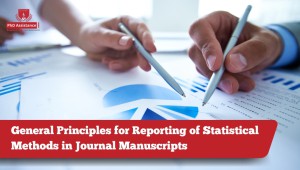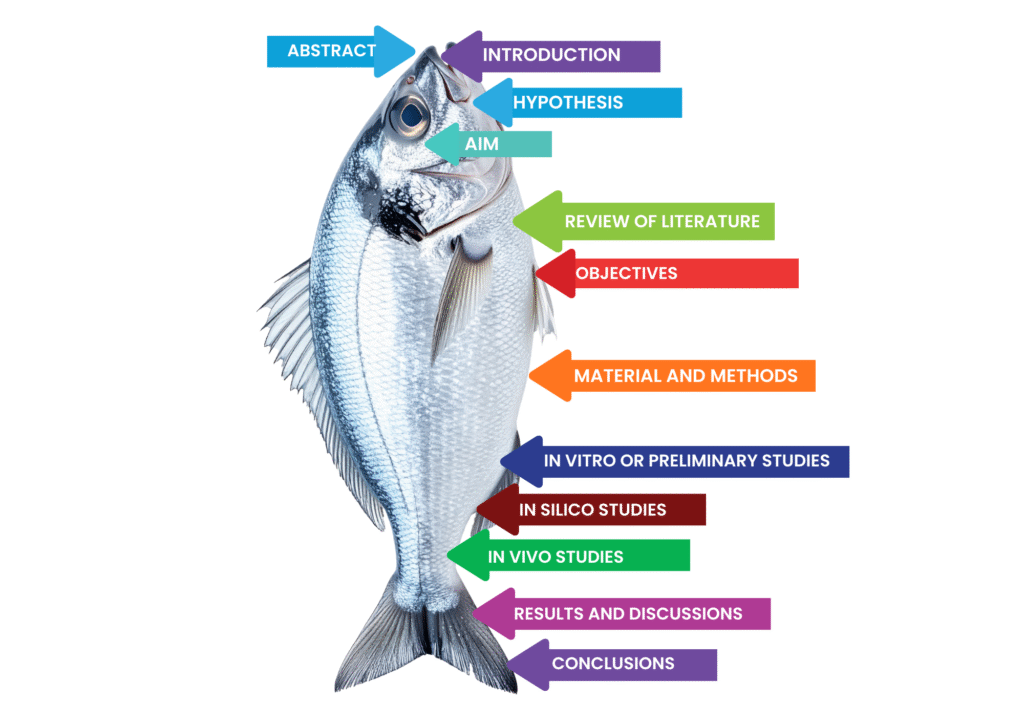PhD Proposal Writing for Life Sciences: Addressing Research Gaps and Innovation
PhD Proposal Writing for Life Sciences: Addressing Research Gaps and Innovation
- Home
- Academy
- Research-Methodology
- PhD Proposal Writing for Life Sciences
Addressing Research Gaps and Innovation

Recent Post
Introduction
In the life sciences, a PhD proposal is of utmost importance since it not only displays the researcher’s intended dissertation but also gives a thorough, methodologically grounded plan for progressing scientific knowledge. It points out important research voids, showcases the originality of the proposed work, and mentions the ways in which the research will be a part of the life sciences knowledge. Besides, a good proposal will elaborate on the methodological design, set up the main research questions, and make sure that there is a connection between theoretical frameworks, data collection, and (Jordan, 2021).
The proposal serves as a guide for the researcher and, at the same time, as a strategic argument to obtain financial support and get approval from academic advisors. It is crucial, though, that it should point out how the proposed study will assist in bridging the existing knowledge gaps, and that it will bring about future scientific developments through (Wong et al., 2022) the use of competitive methods in life sciences (Chui et al., 2023).
1. What is a PhD Proposal in Life Sciences?
A PhD proposal is a strategic document that serves to define the direction for the long-term research project. It describes the research hypothesis, objectives, and methods to be employed. It is not a summary of the final dissertation but rather a mapping tool that explicitly specifies the limits and aims of the research. This proposal is the one where the research questions, the necessity of the study, and the plans of the researcher for filling the existing gaps in the discipline are stated.
Example: A proposal dealing with antibiotic resistance in the countryside would not only draw the picture of the molecular basis of antibiotic resistance but also work out the contributing environmental factors and even come up with experimental methodologies like microbiome sequencing and metagenomic analysis for the exploration of the role of rural healthcare practices in the resistance development (Wong et al., 2022).
2. Identifying Research Gaps in Life Sciences
The most important aspect of a PhD proposal is the identification of these research gaps—where the present knowledge is not enough or there are conflicting findings. The gaps in life sciences are primarily caused by the complexity of the living systems, the variety of the data, or the advent of new technologies that have not been wholly explored yet (Wong et al., 2022). The proposal not only indicates the gaps but also makes a case for filling them and situates itself in the existing scientific literature.
Example: if there are almost no studies about the impact of climate change on marine fish migrations, a research proposal might suggest a combination of different methods, with satellite tracking as one of them, to continuously produce a detailed map of fish movement over time, as per Daskalov et al. (2025). This would not only be beneficial in marine biology but also would contribute to climate research by providing scientists with high-resolution data of fish movements correlated with oceanographic changes and temperature anomalies.
3. Structuring the PhD Proposal: Key Components
A well-organised PhD proposal in the field of life sciences is divided into multiple main sections, with each section being vital to the overall arrangement of the research in terms of coherence, feasibility, and scientific rigour.
- Introduction: Expresses the problem of research, its importance, and the place of the study in the context of the prevailing discipline. The section provides scientific arguments for the proposal and also gives some background information to set up the theoretical base.
- Literature Review: Existing research is merged, and knowledge gaps are indicated by this synthesis; moreover, the theoretical foundation of the proposed research is established (Chigbu et al., 2023). This review not only situates the research but also guides the methodology of the project by pointing out successful approaches and unresolved questions.
- Research Objectives: The goals of the study are not only stated but are also usually presented in the form of hypotheses or research questions that are derived from the literature’s identified gaps.
- Methodology: In this section, the total research process is laid out in a very thorough manner, which includes the data collection, application of statistics for the data analysis, and the different experiments. Life sciences methods may consist of a variety of techniques such as genomic sequencing, bioinformatics analysis, and clinical trials, as seen in (Luft et al., 2022).
- Expected Outcomes: Among other things, the research that is to be carried out is discussed in terms of its contributions to science and the implications of the research output for the sciences in the future.
Example: The proposal regarding gene editing technologies would, in its method section, describe in detail the process of targeting specific genes in laboratory animals by means of CRISPR-Cas9, then assessing the phenotypic characteristics, and finally performing genomic sequencing for the purposes of monitoring the mutations and measuring the changes in gene expression (Luft et al., 2022).

4. Innovation in a PhD Proposal
Innovation is the lifeblood of the research conducted in life sciences and it has to be vivid in the PhD proposal. Jordan (2021) narrates that a successful proposal not only fills the existing gaps but also brings forth new methods, technologies, or interdisciplinary collaborations to reach the core of biological problems. Innovations can be introducing non-mainstream methods like single-cell RNA sequencing in gene expression studies or the application of machine learning for predicting the occurrence of genetic disorders.
Example: Machine learning algorithms applied to genomic studies could be a drastic step towards mutation detection and disease prognosis that are more precise, as it allow the researchers to sift through huge amounts of data and spot even very minor genetic changes with greater accuracy (Chui et al., 2023).
5. Addressing Research Gaps through Methodology
A solid methodology in a PhD proposal not only describes the researcher’s way of dealing with the recognised research voids but also gives a dependable roadmap for the researcher to follow. The method part should give detailed information about the experiments, the ways of gathering the data as well as the processes of analysing the data, which are all capable of providing answers to the posed research questions as well as of contributing to the mentioned gaps in the literature (Luft et al., 2022).
Example: A field experiment may be suggested to investigate the effect of climate change on plant growth by changing water and light conditions and performing the analysis of stress-related genes to investigate plant response as a whole. This study would rely on to some extent the understanding of the plant’s metabolism and adaptation through environmental stressors (Measey, 2021).
6. Structuring the Literature Review: Identifying Knowledge Gaps
A solid methodology in a PhD proposal gives a comprehensive picture of the researcher’s approach to tackling the recognised research voids and also provides a reliable roadmap for the researcher to follow. The method part must provide a thorough account of the experiments, the means of data collection, and the data analysis processes which are all capable of furnishing answers to the research questions posed plus contributing to the mentioned gaps in the literature (Luft et al., 2022).
Example: A field experiment might be proposed for the purpose of changing the water and light conditions to find out how climate change impacts on plant growth while at the same time conducting the analysis of stress-related genes to investigate the plant’s response as a whole. To a certain extent, this study would depend on the knowledge of the plant’s metabolism and its ability to cope with environmental stressors (Measey, 2021).
7. The Importance of a Clear Conceptual Framework
One of the most important parts of a PhD proposal is the conceptual framework, which indicates the variables together with their relationships, thereby directing the research design and ensuring the methodology is clear. In this manner, it ties together the research hypotheses, methodology, and expected results and consequently creates a direct path for resolving the research questions. A precise framework is crucial for reminding researchers about their subject and being able to arrange it scientifically (Luft et al., 2022).
Example: A conceptual framework for the study of human pollution effects may link the indicators of air quality to the health consequences of respiratory diseases and heart diseases, thus assisting in collecting and interpreting data statistically (Chigbu et al., 2023).
Conclusion
A proposal for doctoral studies in life sciences is not just a planning document; it is a scientific blueprint that fills important gaps in the science, integrates new methods and technologies, and opens the door to the scientific community. A proposal that is properly structured secures the research to be very good in terms of theory, methodology, and knowledge advancement in the scientific domain.
It was underlined by Tait and Wield (2021) that a clear conceptual framework that is clear and well-defined research objectives that are well-defined are essential factor for gaining both funding and supervision. This methodical manner of doing things not only reveals the possible influence of the proposed research but also underscores its relevance to science and society, thereby, altogether, facilitating further developmental activities in life sciences.
Ready to develop a strong research proposal for your dissertation?
Our team of PhD experts can offer you tailored assistance in designing a precise research proposal that accurately connects your research objectives and gaps in the literature.
PhD Assistance will help you at all levels and in all ways with any research writing you need. Contact PhD Assistance Research Lab right away.
References
- Wong, E. C., Maher, A. R., Motala, A., Ross, R., Akinniranye, O., Larkin, J., & Hempel, S. (2022). Methods for identifying health research gaps, needs, and priorities: a scoping review. Journal of General Internal Medicine, 37(1), 198-205. https://pubmed.ncbi.nlm.nih.gov/34748098/
- Daskalov, G. M., de la Puente, S., Scotti, M., Klayn, S., Briguglio, M., Coro, G., Gal, G., Heymans, J. J., Rodriguez-Perez, A., Steenbeek, J. G., Sylaios, G., & Tsikliras, A. C. (2025). Managing fisheries and ecosystems: current good practices and the EcoScope project experience. Frontiers in Marine Science, 12. https://www.frontiersin.org/journals/marine-science/articles/10.3389/fmars.2025.1640487/full
- Chigbu, U. E., Atiku, S. O., & Du Plessis, C. C. (2023). The science of literature reviews: Searching, identifying, selecting, and synthesising. Publications, 11(1), 2. https://www.mdpi.com/2304-6775/11/1/2
- Luft, J. A., Jeong, S., Idsardi, R., & Gardner, G. (2022). Literature reviews, theoretical frameworks, and conceptual frameworks: An introduction for new biology education researchers. CBE—Life Sciences Education, 21(3), rm33. https://doi.org/10.1187/cbe.21-05-0134
- Jordan, J. F. (2021). Innovation, commercialization, and start-ups in life sciences. CRC Press. https://doi.org/10.1201/b17287

